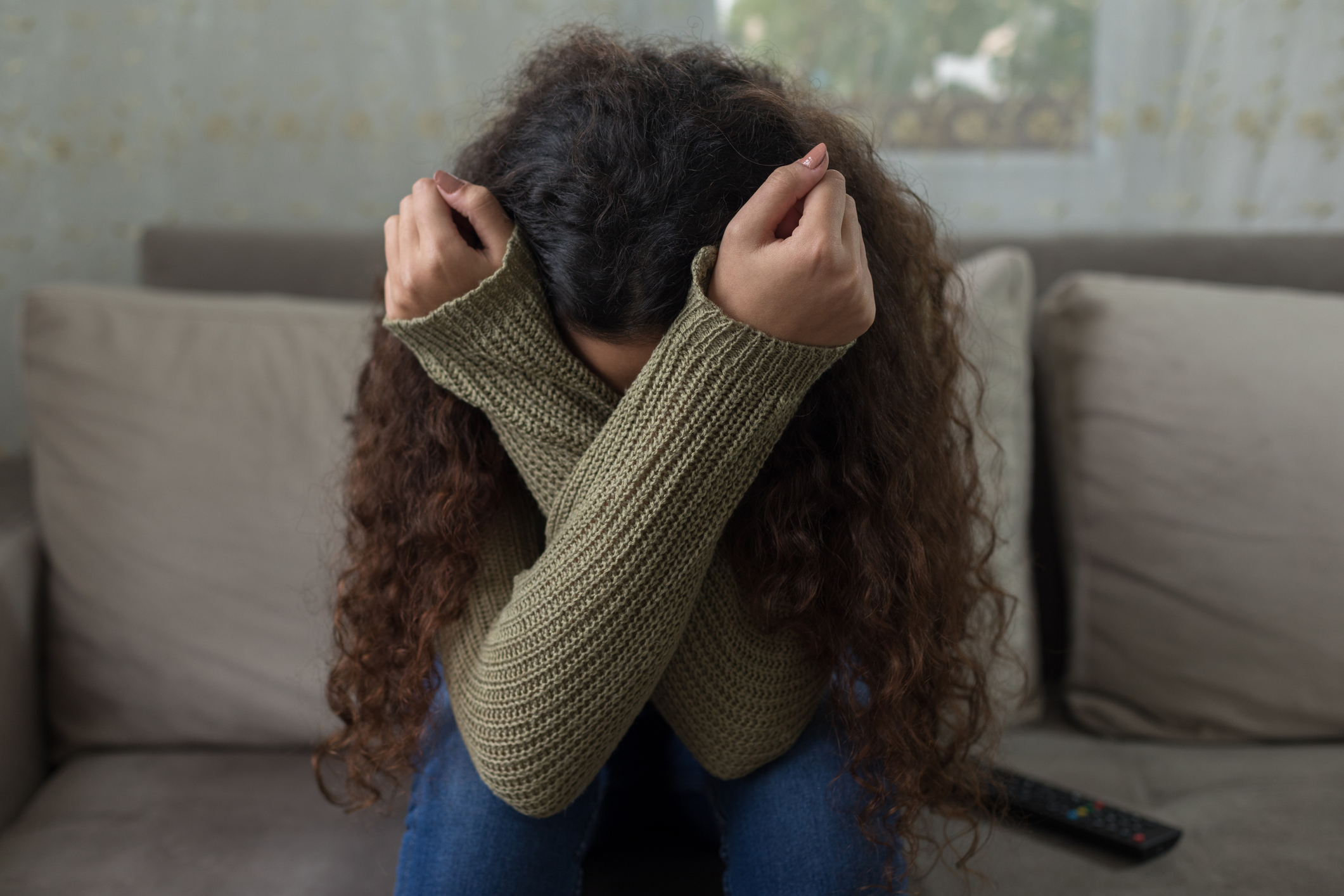According to a new research study published in JAMA Pediatrics, around one in four young people globally is experiencing clinically elevated depression, while one in five is experiencing clinically elevated anxiety – double that of pre-COVID-19 pandemic estimates. A new CDC report found that U.S. emergency department visits for suspected suicide attempts began to increase during the pandemic among adolescents aged 12–17 years, especially among girls.
Such studies bring attention to the importance of mental health interventions as part of the COVID-19 response and recovery.
Here is how a new hospital program in Iowa is helping families with kids in a mental health crisis and how an innovative surveillance system is helping us learn more about suicides in our state.
A new program for Iowan families to prevent youth suicide
Dr Kelly Wood, Clinical Professor of Pediatrics at the UI Stead Family Children’s Hospital (SFCH), helped bring a free program to the hospital for parents and caregivers of kids who have thought about suicide or tried to harm themselves. The Suicidal Adolescent Family Empowerment (S.A.F.E.) online program helps caregivers cope and teaches skills for dealing with a mental health crisis through a video presentation, a relaxation video, and other resources.
“One important topic is safety – specifically limiting the adolescent’s or child’s access to lethal means of suicide during the acute crisis,” she said.

The S.A.F.E. program was born, Wood said, after she enrolled the UI SFCH in a multi-center grant funded quality improvement study to identify quality measures for children’s hospitals, including measures around mental health. One measure was to ensure that caregivers of all pediatric patients admitted to the hospital with suicidal thoughts/behaviors and/or self-harm were counseled on how to restrict access to lethal means of suicide.
Through this work, Wood said, she learned about an innovative youth suicide program at Seattle Children’s Hospital and then partnered with her colleague, Kim Anderson, LISW, to create the S.A.F.E. program at Iowa. Later, Ricardo Charria, LISW, joined the team to help create a Spanish version of the program.
“Kim was the social worker on the unit I worked on at SFCH,” Wood said. “We shared a passion for caring for pediatric patients with mental illness, recognizing mental illness remains misunderstood by many, including healthcare professionals. We wanted to create a holistic program for caregivers that focused on more than just safety planning.”
Wood said keeping kids with suicidal thoughts and behaviors safe starts by locking up or removing safety hazards in their environment. These hazards include firearms, medications, insecticides, cleaning agents, sharp objects (like razors, paperclips), and items that strangle (like plastic bags, bed sheets). Other important strategies highlighted in the S.A.F.E. program include bedroom searches for hazards (with the child’s knowledge), electronic safety measures, and crisis prevention planning.
“Time is key. The more time it takes for the child to find a dangerous item, the more time there is to intervene and for the child to calm down.” she said.

Suicide rates are higher in rural areas compared to urban ones. A recent study by UI Hospital & Clinic researchers surveyed over 1,300 rural youth in Iowa about the presence and storage of firearms in their homes. Researchers found the vast majority had firearms in their homes and a large proportion of these firearms were not stored safely. Of youth with rifles/shotguns in their homes, over half (51%) reported these firearms were stored unlocked.
Suicide is the second leading cause of death for people ages 10 to 34 years old. Wood said research has shown that talking to your child about suicide does not increase the risk that your child will attempt suicide.
“Even though you may not fully understand, your child needs your support,” she said. “It is also important to talk to your child to ensure he/she/they is safe. Anytime your child discloses suicidal thoughts it is important to take them seriously and seek professional help.”
Common events prior to a suicide attempt, Wood said, include family stressors such as divorce or parental conflict, relationship difficulties, and school-related problems such as bullying. She said suicidal behavioral is often a result of an underlying issue such as depression, anxiety, traumatic stress, or substance abuse.
“Be supportive and listen to your child.” Wood said. “Avoid focusing on what triggered the event. Help your child learn healthy coping and problem-solving skills such as those listed on a crisis prevention plan. Get your child professional help to treat his/her/their mental illness.”
The S.A.F.E. program also addresses the personal decision to tell or not tell others outside the immediate family about the mental health crisis and how to talk to the child’s siblings about it. The S.A.F.E. program can be found on the UI Stead Family Children’s Hospital website and is available in English and Spanish.

A surveillance system to better understand suicide deaths in Iowa
According to the CDC, suicide rates in the U.S. have gone up about 33% from 1999 to 2019.
Keri Neblett, Suicide Prevention Director at the Iowa Department of Public Health, said in Iowa, suicide is the 2nd leading cause of death for people between the ages of 15 and 24 years old.
“In 2019, 35 Iowa teens died by suicide,” she said. “The preliminary data for 2020 do not show a rise in youth suicide deaths in Iowa during the pandemic which is in line with what is happening nationwide.”
The Iowa Violent Death Reporting System (IAVDRS) is a state-based surveillance system that can capture hundreds of unique data elements on all types of violent deaths (homicides & suicides), in all settings, and for all age groups. Data come from multiple sources including death certificates, coroner/medical examiner reports, law enforcement reports, and toxicology reports.
Since Iowa started collecting data for the IAVDRS in 2015, the IAVDRS has looked deeper into suicide deaths, which make up the majority (around 78%) of violent deaths in the state. The IADVRS has been housed at the Iowa Department of Public Health since its establishment in 2014 and is funded by the CDC.
Data from the IAVDRS, Neblett said, can be used to identify trends in demographics, location of suicide, time, means of suicide, circumstances surrounding the death, and other variables that could assist the state in suicide prevention planning.
“The IAVDRS compiles and analyzes detailed information on deaths by suicide in Iowa that was not available prior to IAVDRS,” she said. “These data are an important part of the suicide prevention story.”

The surveillance system does not capture all aspects of suicide. Neblett said additional data sources such as the Iowa Youth Survey and hospital discharge data can be utilized to look at trends related to suicide ideation and suicide attempts.
While suicide is a complex issue that is a result of multiple factors, she said, there are resources and treatments available to help youth who are having thoughts of suicide.
“Parents, teachers, coaches, and others who are connected to youth in Iowa can find resources and learn the risk factors and warning signs of distress by going to yourlifeiowa.org.”
Your Life Iowa (YLI) is the integrated hub/system for free and confidential help and information for alcohol, drugs, gambling, mental health, and suicide. YLI is available 24/7 via phone (855-581-8111), text (855-895-8398), chat, and social media (@YourLifeIowa). Additionally, since 2019, YLI has been Iowa’s statewide crisis line for mental health. Whether by phone, text, or chat, YLI crisis counselors are available to provide information, emotional support, suicide risk assessments, crisis counseling, and referrals to community resources. Visit YourLifeIowa.org to find resources, information and/or locate/find mental health, substance use, and problem gambling treatment in Iowa.
Published 9/8/2021
Other Resources:
American Foundation for Suicide Prevention
Action Alliance’s Mental Health & Suicide Prevention National Response to COVID-19
Linking data to understand violent deaths in Iowa (UI IPRC blogpost)
Kids, families & mental health during COVID-19 (UI IPRC blog post)
Webinar: Epidemiology of Youth Suicide and Suicidal Behavior (Midwest Injury Prevention Alliance)
Expert advice for handling changes in adolescent mental health during COVID
Suicide circumstances (Iowa) 2016-2018 (latest IAVDRS report)
Suicide in Iowa, 2018 (latest IAVDRS report)